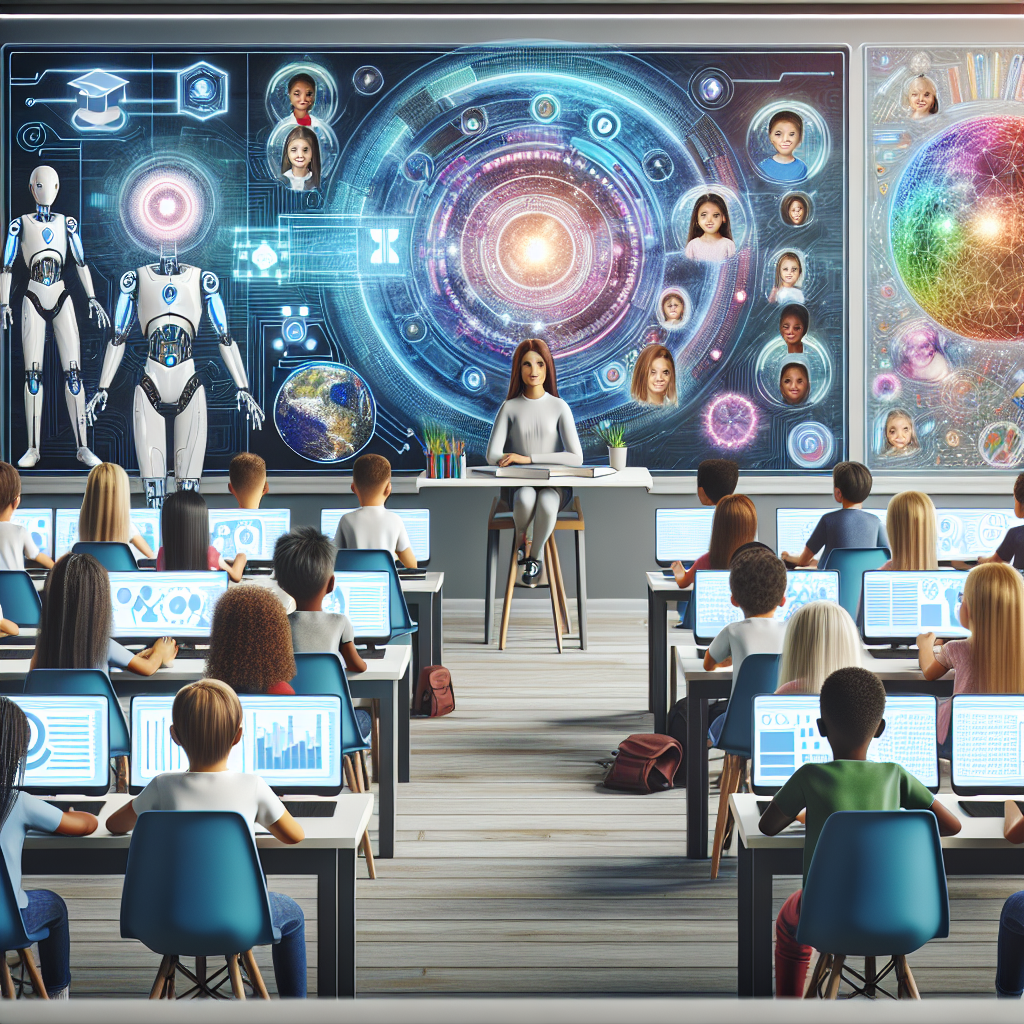The Rise of AI Platforms in Education
In recent years, artificial intelligence (AI) has been making significant strides in various industries, including education. AI platforms are revolutionizing the way students learn, teachers teach, and educational institutions operate. These platforms use machine learning algorithms to analyze data, personalize learning experiences, and provide insights that can help improve student outcomes. The rise of AI platforms in education is changing the landscape of teaching and learning, and educators are leveraging these tools to enhance the educational experience for students.
Benefits of AI Platforms in Education
AI platforms offer numerous benefits for students, teachers, and educational institutions. One of the key advantages of AI in education is its ability to personalize learning experiences. AI platforms can analyze each student’s learning style, strengths, and weaknesses to create customized learning paths that cater to their individual needs. This personalization helps students learn at their own pace and in a way that works best for them, ultimately leading to improved academic performance.
AI platforms also provide teachers with valuable insights into student progress and performance. These platforms can track student engagement, identify areas where students are struggling, and suggest interventions to help students improve. By leveraging AI, teachers can better understand their students’ needs and tailor their instruction to address those needs more effectively.
Furthermore, AI platforms can help educational institutions streamline their operations and make data-driven decisions. These platforms can analyze large amounts of data to identify trends, predict outcomes, and optimize resource allocation. By using AI, institutions can improve efficiency, reduce costs, and enhance the overall quality of education they provide to students.
Examples of AI Platforms in Education
There are a variety of AI platforms that are transforming education in different ways. One example is Squirrel AI Learning, an AI-powered tutoring platform that provides personalized learning experiences for students. Squirrel AI uses machine learning algorithms to assess students’ knowledge, skills, and learning preferences, and then creates individualized learning paths to help students reach their full potential.
Another example is DreamBox Learning, an adaptive math program that uses AI to provide personalized math instruction for students. DreamBox analyzes students’ responses to math problems in real-time and adjusts the difficulty level of the problems based on their performance, ensuring that each student receives instruction that is tailored to their needs.
Additionally, Carnegie Learning offers an AI-based platform that provides personalized math instruction for students in K-12 education. The platform uses machine learning algorithms to analyze student data and create customized learning paths that help students master math concepts and improve their problem-solving skills.
FAQs about AI Platforms in Education
Q: How do AI platforms personalize learning experiences for students?
A: AI platforms use machine learning algorithms to analyze data about each student’s learning style, strengths, and weaknesses. Based on this analysis, the platform creates customized learning paths that cater to the individual needs of each student, allowing them to learn at their own pace and in a way that works best for them.
Q: How can AI platforms help teachers improve student outcomes?
A: AI platforms provide teachers with valuable insights into student progress and performance. These platforms can track student engagement, identify areas where students are struggling, and suggest interventions to help students improve. By leveraging AI, teachers can better understand their students’ needs and tailor their instruction to address those needs more effectively.
Q: How do AI platforms help educational institutions optimize their operations?
A: AI platforms can analyze large amounts of data to identify trends, predict outcomes, and optimize resource allocation. By using AI, educational institutions can improve efficiency, reduce costs, and enhance the overall quality of education they provide to students.
Q: Are AI platforms replacing teachers in the classroom?
A: AI platforms are not meant to replace teachers, but rather to support them in their efforts to provide high-quality education to students. While AI can help personalize learning experiences and provide valuable insights, human teachers still play a crucial role in guiding and supporting students in their learning journey.
Q: What are some challenges associated with implementing AI platforms in education?
A: Some challenges associated with implementing AI platforms in education include concerns about data privacy and security, the need for teacher training to effectively use AI tools, and the potential for bias in AI algorithms. It is important for educational institutions to address these challenges and ensure that AI platforms are used in a responsible and ethical manner.
Conclusion
The rise of AI platforms in education is revolutionizing the way students learn, teachers teach, and educational institutions operate. These platforms offer personalized learning experiences, valuable insights for teachers, and operational efficiencies for institutions. While there are challenges associated with implementing AI in education, the benefits of leveraging AI tools far outweigh the risks. As AI continues to advance, it will play an increasingly important role in shaping the future of education and helping students reach their full potential.

